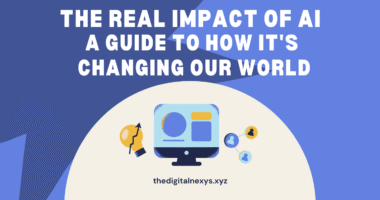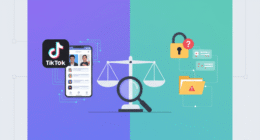In the digital world, a new kind of arms race is here. The weapons are not traditional. Instead, they are algorithms and data. On one side, cybercriminals use AI to create smarter attacks. On the other side, security experts use AI to build stronger defenses. This is the new reality of AI in cybersecurity. By 2026, this dynamic will define the entire security landscape. For business leaders and IT professionals, understanding this revolution is a matter of survival.
AI as the Defender: Revolutionizing Security Operations
For years, security teams reacted to problems. They would wait for an alert, investigate it, and then respond. However, this manual approach is too slow for today’s automated attacks. This is where the defensive power of AI in cybersecurity truly shines.
Proactive Threat Hunting with AI
Instead of waiting for an attack, AI can proactively hunt for threats. Machine learning models can analyze huge amounts of network data. This includes everything from login patterns to data flows. The models learn what “normal” behavior looks like on the network. As a result, when they spot a small change that might be an attack, they can flag it for a human expert. This allows teams to stop breaches before they can cause serious damage.
Automated Incident Response
When a threat is found, speed is everything. AI can automate the first steps of a response. For example, if an AI finds a possible malware infection on a laptop, it can automatically cut that device off from the network. This stops the threat from spreading. This happens in milliseconds, much faster than a human could react. This automation frees up human experts to focus on the more complex parts of the problem.
AI as the Attacker: The Rise of Smarter Cyber Threats
Unfortunately, these powerful tools are not just for the defenders. The use of AI in cybersecurity attacks is becoming more common and more advanced.
For instance, scammers now use AI to create very convincing phishing emails. As we discussed in our guide to spotting phishing scams, these messages can perfectly copy the writing style of a trusted colleague. This makes them incredibly hard to detect. Furthermore, attackers are using AI to create “polymorphic” malware. This is a type of bad software that constantly changes its own code. It does this to avoid being found by traditional antivirus programs.
The Cybersecurity Landscape in 2026: Key Predictions
Looking ahead, the role of AI in cybersecurity will only grow. Here are a few key predictions for the landscape in 2026.
- AI-Driven Security Teams: Most security teams will be built around a human-machine model. AI will handle most of the data work and initial response. Human analysts will provide oversight and strategic direction.
- The Rise of Deepfake Fraud: Using fake AI-generated video and audio to trick people will become a major threat. This will require new ways to verify a person’s identity.
- A Focus on AI Security: A new field of cybersecurity will emerge. It will focus on protecting the AI models themselves from being attacked or manipulated.
How to Prepare Your Organization for the AI Security Era
Adapting to this new era of AI in cybersecurity requires a smart plan. Firstly, you must invest in AI-powered defensive tools. Traditional security solutions are no longer enough. Secondly, you need to focus on continuous training for your employees. They are your first line of defense against AI-powered phishing attacks. Finally, it is crucial to understand the technology itself. Knowing the basics of what an LLM is can help you understand what these new systems can and cannot do. As government bodies like CISA emphasize, a multi-layered approach is essential.

Conclusion: Embracing AI for a More Resilient Future
In conclusion, the use of AI in cybersecurity is a double-edged sword. It creates more powerful tools for both attackers and defenders. The organizations that will succeed are the ones that embrace AI proactively. By investing in AI-driven defenses and preparing for new threats, we can build a more secure digital future. The digital arms race is here. The winning side will be the one that partners best with intelligent machines.
Join the Conversation on AI Security
Which AI-driven threat are you most concerned about for the future? Share your thoughts and insights with our community in the comments below!







